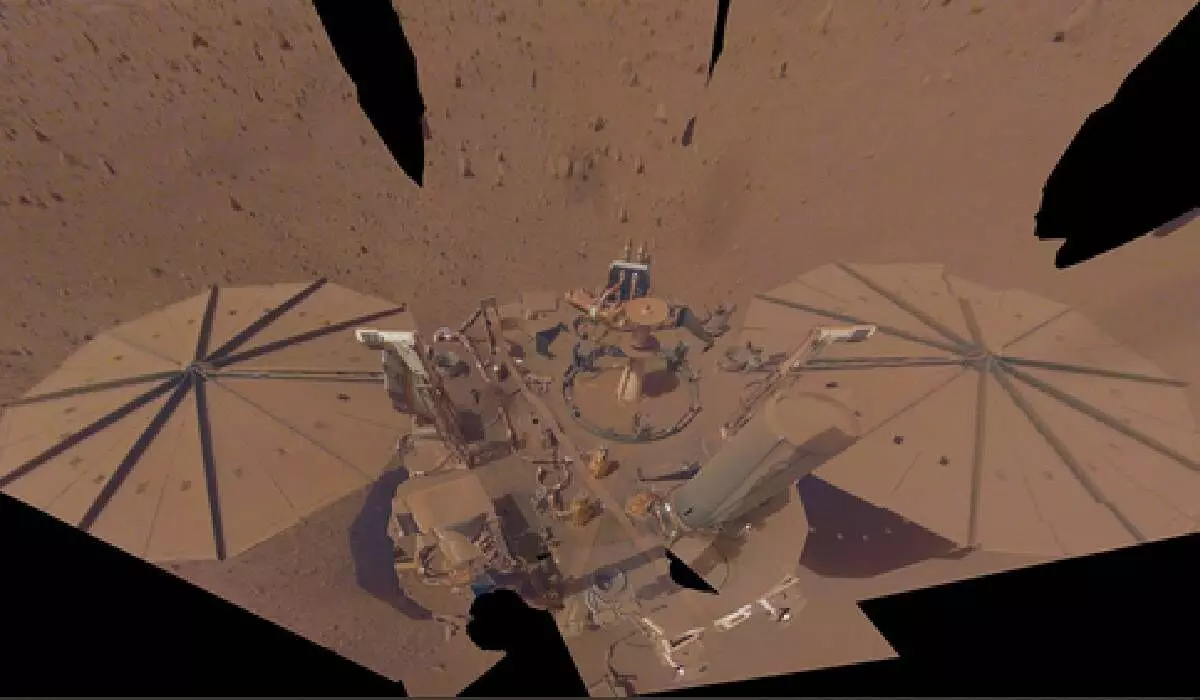Mars is speeding up, and scientists don’t know why
Scientists have made the most precise measurements ever of Mars’ rotation, for the first time detecting how the planet wobbles due to the “sloshing” of its molten metal core
image for illustrative purpose

The findings, detailed in the journal Nature, are based on data from NASA’s InSight Mars lander, which operated for four years before running out of power during its extended mission in December 2022. To track the planet’s spin rate, the study’s authors relied on one of InSight’s instruments: A radio transponder and antennas collectively called the Rotation and Interior Structure Experiment, or RISE.
They found the planet’s rotation is accelerating by about 4 milliarcseconds per year - corresponding to a shortening of the length of the Martian day by a fraction of a millisecond per year. It’s a subtle acceleration, and scientists aren’t entirely sure of the cause. But they have a few ideas, including ice accumulating on the polar caps or post-glacial rebound, where landmasses rise after being buried by ice. The shift in a planet’s mass can cause it to accelerate a bit like an ice skater spinning with their arms stretched out, then pulling their arms in.
The paper examined data from InSight’s first 900 Martian days. Scientists had their work cut out for them to eliminate sources of noise: Water slows radio signals, so moisture in the Earth’s atmosphere can distort the signal coming back from Mars. So can the solar wind, the electrons and protons flung into deep space from the Sun.
“What we’re looking for are variations that are just a few tens of centimetres over the course of a Martian year,” said lead author and RISE’s principal investigator, Sebastien Le Maistre at the Royal Observatory of Belgium. “It takes a very long time and a lot of data to accumulate before we can even see these variations.”
“It’s a historic experiment,” said Le Maistre. “We have spent a lot of time and energy preparing for the experiment and anticipating these discoveries. But despite this, we were still surprised along the way -- and it’s not over, since RISE still has a lot to reveal about Mars.”
RISE data was also used by the study authors to measure Mars’ wobble -- called its nutation -- due to sloshing in its liquid core. The measurement allows scientists to determine the size of the core: Based on RISE data, the core has a radius of roughly 1,835 kilometres.
The authors then compared that figure with two previous measurements of the core derived from the spacecraft’s seismometer. Specifically, they looked at how seismic waves travelled through the planet’s interior -- whether they reflected off the core or passed through it unimpeded.
Taking all three measurements into account, they estimate the core’s radius to be between 1,790 and 1,850 kilometres. Mars as a whole has a radius of 3,390 kilometres -- about half the size of Earth’s. Measuring Mars wobble also provided details about the shape of the core.
“RISE’s data indicate the core’s shape cannot be explained by its rotation alone,” said the paper’s second author, Attilio Rivoldini of the Royal Observatory of Belgium. “That shape requires regions of slightly higher or lower density buried deep within the mantle.”

